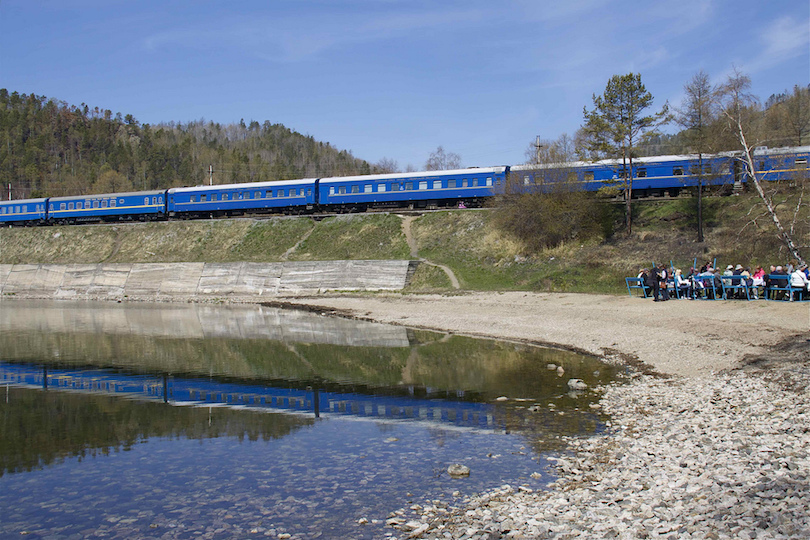Nanda Devi National Park is a protected area located in the Indian state of Uttarakhand. This park is named after the Nanda Devi Peak, which is the second-highest mountain peak in India. It is situated in the heart of the Himalayas and is one of the most spectacular places in the world. This article will explore the history, geography, flora, and fauna of Nanda Devi National Park.

History of Nanda Devi National Park
The park was established in 1982 and was declared a UNESCO World Heritage Site in 1988. The park covers an area of 630.33 square kilometers and is surrounded by the Nanda Devi Sanctuary. The area has been inhabited by indigenous people for centuries and is considered sacred by the locals. The park is also home to the Bhotiya people who are the traditional inhabitants of the area.

Geography of Nanda Devi National Park
The park is located in the Chamoli district of Uttarakhand and is surrounded by the Nanda Devi Sanctuary. The park is situated at an altitude of 2,500 meters to 7,817 meters above sea level. The park is home to several peaks, including the Nanda Devi Peak, which is the second-highest peak in India. The park is also home to several glaciers, including the Rishi Ganga Glacier, which is one of the largest glaciers in the park.
Flora of Nanda Devi National Park
The park is known for its rich and diverse flora. The park is home to several rare and endangered species of plants, including the Himalayan blue poppy, Himalayan bellflower, Himalayan cobra lily, and Himalayan musk deer. The park is also home to several species of rhododendrons, which are in full bloom during the summer months.
Fauna of Nanda Devi National Park
The park is home to several rare and endangered species of animals, including the snow leopard, Asiatic black bear, brown bear, musk deer, and bharal. The park is also home to several species of birds, including the Himalayan monal, Himalayan griffon, and Himalayan snowcock.
Trekking in Nanda Devi National Park
Nanda Devi National Park is a popular destination for trekking enthusiasts. The park offers several trekking routes, including the Nanda Devi East Base Camp trek, the Kuari Pass trek, and the Roopkund trek. The park is also home to several camping sites, which offer a unique experience of living in the heart of the Himalayas.
How to Reach Nanda Devi National Park
The park is accessible by road and air. The nearest airport is the Jolly Grant Airport in Dehradun, which is 275 kilometers from the park. The nearest railway station is the Rishikesh railway station, which is 250 kilometers from the park. The park is also well connected by road and can be reached by bus or taxi.

Best Time to Visit Nanda Devi National Park
The park is open from May to October. The best time to visit the park is during the summer months when the weather is pleasant and the flora is in full bloom. The monsoon season should be avoided as the park receives heavy rainfall during this time.
Accommodation in Nanda Devi National Park
The park offers several options for accommodation, including guesthouses, lodges, and camping sites. The accommodation options are basic, but they offer a unique experience of living in the heart of the Himalayas.
Conservation Efforts in Nanda Devi National Park
The conservation of Nanda Devi National Park is crucial to preserve the rich and diverse flora and fauna of the area. The park is home to several rare and endangered species of plants and animals, and it is important to protect their habitat.
The park authorities have taken several steps to protect the park’s ecosystem. The park is managed by the Nanda Devi Biosphere Reserve, which is a conservation organization established in 1986. The reserve is responsible for the park’s management, conservation, and development.

The park authorities have taken several measures to prevent human activities that could harm the park’s ecosystem. The use of plastics and other non-biodegradable materials is strictly prohibited in the park. The park authorities have also banned the use of firewood for cooking, and tourists are required to carry their own cooking gas.
The park authorities have also taken steps to promote eco-tourism in the area. The park offers several trekking routes, which are designed to minimize the impact on the park’s ecosystem. The park authorities also encourage tourists to use eco-friendly camping equipment and to dispose of their waste responsibly.
The park authorities have also undertaken several research and monitoring programs to study the park’s ecosystem. The research programs are aimed at understanding the park’s flora and fauna and their interactions with the environment. The monitoring programs are aimed at tracking the park’s environmental changes and identifying any threats to the park’s ecosystem.
Overall, the conservation efforts in Nanda Devi National Park have been successful in preserving the park’s rich and diverse ecosystem. The park is a testament to the importance of conservation and the need to protect our natural heritage for future generations.
Conclusion
Nanda Devi National Park is a natural wonder in the heart of the Himalayas. The park is home to several rare and endangered species of plants and animals, and it is crucial to protect their habitat. The park authorities have taken several measures to protect the park’s ecosystem, and the conservation efforts have been successful in preserving the park’s rich and diverse flora and fauna. Nanda Devi National Park is a must-visit destination for nature lovers and adventure enthusiasts.
FAQs
- What is the altitude of Nanda Devi National Park? The park is situated at an altitude of 2,500 meters to 7,817 meters above sea level.
- What is the best time to visit Nanda Devi National Park? The park is open from May to October. The best time to visit the park is during the summer months when the weather is pleasant and the flora is in full bloom.
- What are the popular trekking routes in Nanda Devi National Park? The park offers several trekking routes, including the Nanda Devi East Base Camp trek, the Kuari Pass trek, and the Roopkund trek.
- What are the rare and endangered species found in Nanda Devi National Park? The park is home to several rare and endangered species of plants and animals, including the snow leopard, Asiatic black bear, brown bear, musk deer, and bharal.
- What is the Nanda Devi Biosphere Reserve? The Nanda Devi Biosphere Reserve is a conservation organization established in 1986, responsible for the management, conservation, and development of the park.















Excellent beat ! I would like to apprentice while you amend your site, how can i subscribe for a
blog site? The account aided me a acceptable deal. I had been a little bit acquainted of this
your broadcast offered bright clear concept
Generally I do not read article on blogs, however I would like to say that
this write-up very pressured me to take a look at and do it!
Your writing style has been amazed me. Thanks, quite great
post.
Pretty! This was a really wonderful post. Many thanks for supplying these details.
Feel free to visit my site – ซื้อหวยไทยหรือหวยลาวดีกว่ากัน
It’s amazing for me to have a website, which is useful for my know-how.
thanks admin
I dugg some of you post as I cerebrated they were very beneficial invaluable